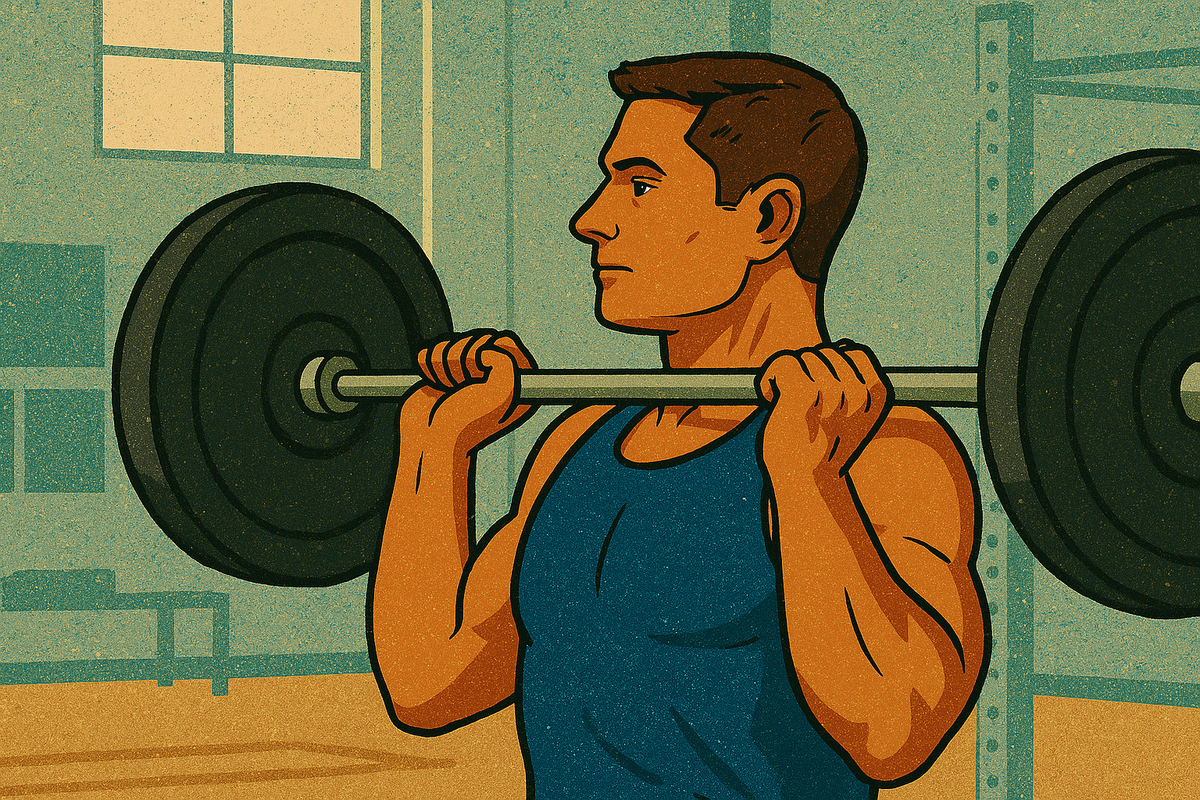
Ever collapsed on the floor after a HIIT session looking like a sweaty starfish but feeling oddly triumphant? Or cruised through a moderate-paced workout with enough breath to belt out your favorite song? Turns out, that emotional rollercoaster (or pleasant scenic route) might be the secret sauce to your exercise consistency!
The Emotional Expedition of Exercise
Let’s be honest—when choosing between high-intensity interval training (HIIT) and moderate exercise, most of us are thinking, “Which one will make my jeans fit better?” or “How fast can I get abs?” But while we’re obsessing over calories and muscles, our brains are secretly keeping score of something else entirely: how each workout makes us feel.
Picture your brain as a fussy restaurant critic writing reviews of every workout. “Today’s HIIT session: Temporarily miserable, followed by a surprising sense of triumph. Three stars!” These emotional reviews might actually determine whether you show up for your next sweat session.
Recent research from the lab coats who study such things suggests that while HIIT might temporarily make you question your life choices during those all-out bursts, the post-workout satisfaction score nearly ties with more laid-back moderate exercise. Plot twist!
The Tale of Two Workouts
HIIT: The Drama Queen of Exercise
During a typical HIIT session:
- Your happy feelings take a temporary nosedive (usually right about when the burpees start)
- Your body screams “WHY ARE WE DOING THIS?!” in the language of exhaustion
- Your perceived effort level shoots up to “I might be dying” on the exertion scale
- You become well-acquainted with the emotional whiplash of “this is terrible” to “I get a break now!” and back again
Science confirms what you’ve suspected: during those peak intensity moments when you’re at 70-85% of your maximum heart rate, your brain is not throwing a party. It’s more like hosting a debate club meeting where the topic is “Was this workout a terrible idea?”
Moderate Exercise: The Steady Eddie
During a moderate-intensity session:
- Your mood stays as even as your heart rate
- Physical exhaustion remains at “I could totally have a conversation right now” levels
- Your perceived effort hovers around “challenging but not questioning my life choices”
- You maintain a consistent “I’ve got this” vibe (cruising at 55-70% of max heart rate)
Moderate exercisers tend to maintain a more stable emotional state, without the dramatic peaks and valleys. Think of it as the difference between a roller coaster (HIIT) and a pleasant drive along the coast (moderate) - both get you somewhere, but with very different journeys!
The Plot Twist: The Post-Workout Equalizer
Here’s where the story takes an unexpected turn. Despite all the mid-HIIT existential crises, research shows that once you’ve showered off the evidence of your suffering, both HIIT and moderate exercisers report remarkably similar levels of:
- Overall enjoyment (yes, really!)
- Positive engagement with the activity (no grudges held)
- Feelings of revitalization (that post-exercise glow is democratic)
- Emotional tranquility (even after your heart tried to escape your chest)
Scientists call this the “dual-mode theory,” but I call it the “selective exercise amnesia phenomenon.” Your brain, that clever organ, essentially files away the “this is torture” memories and keeps the “I’m amazing for doing that” highlight reel. It’s like how people forget the pain of childbirth enough to have second children, but for burpees.
Finding Your Personal Exercise Flavor Profile
So what does this psychological plot twist mean for your workout routine? Here’s your personalized decoder ring:
If You’re a Fitness Newbie:
- Start with moderate-intensity workouts (no need to traumatize yourself right out of the gate)
- Gradually introduce HIIT intervals like you’re dipping toes into cold water—slowly and with plenty of complaining
- Remember that hating every second of a HIIT burst doesn’t mean you’ll hate the memory of it (weird but true!)
If You’re Chronically Time-Crunched:
- HIIT is your efficiency superpower—like the microwave of fitness
- Accept that while you may temporarily question your sanity during those 30-second all-out efforts, you’ll feel just as accomplished as your friend who did an hour on the elliptical
- Create a playlist so epic it would motivate a sloth to sprint (music is your psychological painkiller)
If You’re in It for Both Brain and Brawn Benefits:
- Mix workout types like you’re creating a fitness playlist—some intense beats, some smooth melodies
- Schedule HIIT for days when your energy cup is full and your schedule allows for post-workout horizontal recovery time
- Save moderate exercise for days when you need your workout to double as therapy without the sweaty drama
For Everyone on Planet Fitness:
- Become an emotional detective about your workouts—note which ones leave you feeling like a superhero afterward
- Don’t assume that mid-workout suffering equals a mental health fail—sometimes it’s quite the opposite
- Consider the post-workout glow as part of your exercise “payment”—sometimes the best rewards come after the receipt
Your Living Room Fitness Laboratory
No gym membership? No problem! Both workout styles can thrive in the natural habitat of your living room (just move the coffee table and warn your pets).
Living Room HIIT: The “Why Is My Furniture Witnessing This?” Workout (20 min):
- 5-minute warm-up (basic enough that your dignity remains intact)
- 20 seconds of maximum effort movement (jump squats, burpees, or high knees—pick your poison)
- 10 seconds of blessed relief (gasp for air, question life choices)
- Repeat for 4 minutes (it’ll feel like 40)
- Take a 1-minute break (lie on the floor dramatically if needed)
- Repeat the entire sequence 3 times (yes, despite your internal protests)
- 5-minute cool-down (celebrate still being alive)
Living Room Moderate Workout: The “My Neighbors Won’t Think I’m Being Attacked” Option (30 min):
- 5-minute warm-up (no drama here)
- 20 minutes of continuous moderate movement (brisk walking in place, side steps, front kicks—all movements you wouldn’t be embarrassed to be caught doing)
- Include a one-minute break every 5 minutes (because you’re reasonable)
- 5-minute cool-down (no need for dramatic floor recovery)
The Unvarnished Truth
The lab coats have spoken: while HIIT might temporarily make you question your sanity, your post-workout emotional state will rival that of your more moderately-exercising friends. The fitness world’s greatest plot twist!
The secret to exercise success isn’t finding the “perfect” intensity—it’s finding the workout you’ll actually show up for repeatedly, even when the couch is calling your name. Whether you’re a drama-loving HIIT enthusiast or a steady-state exercise devotee, consistency is your actual superpower.
Remember: the best workout is the one that fits your life, personality, and ability to tolerate momentary discomfort for delayed gratification. Choose your adventure accordingly!
This article is based on research by Tyler M. Dregney, Chelsey M. Thul, Jennifer A. Linde, and Beth A. Lewis, published in Physical Activity and Health, Volume 7, Number 1.
